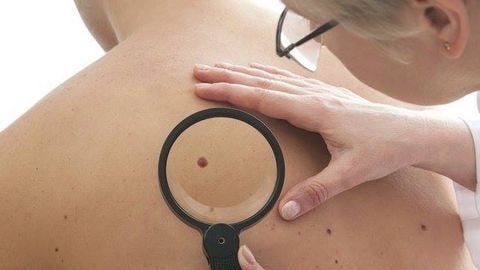Symptoms of malignant melanoma
Melanoma is a type of cancer that begins as malignant melanoma cells, but is the most dangerous of the three types of skin cancer because it invades deeply, metastasizes to other parts of the body, and can be fatal like other cancers.
Malignant melanoma has very diverse and simple initial manifestations that are often easily overlooked even though the lesion is right on the skin. By the time it is discovered, it is already in a late stage, the cancer cells have metastasized far away, making it difficult to treat.
Malignant melanoma can develop from a number of benign skin lesions such as moles, melanocytic nevus, and melanoma (age spots in the elderly), so intervention and proper attention are needed for these benign lesions.
Skin cancer in general, including melanoma, if detected early can be completely cured, so early diagnosis of skin cancer becomes more necessary and important.
Sunlight is the primary cause of malignant melanoma, with ultraviolet rays inducing chromosomal changes. Most cases of malignant melanoma have a history of sunburn at an early age.
About 5% of malignant melanomas occur in congenital nevus, especially giant congenital nevus.
The relationship between female sex hormones (estrogen) and malignant melanoma remains unclear.
Approximately 2-5% of melanomas are familial and 30% of patients with a family history of melanoma have abnormalities of the p16 gene on chromosome 9p21.
People with skin types 1, 2, and 3 have a higher risk of developing malignant melanoma than people with dark skin.

Early signs and symptoms of melanoma
The disease progresses from benign skin lesions:
Mole
Malignant melanoma develops on an existing mole that is often touched or exposed to sunlight repeatedly, but not all moles turn into cancer, only a very small percentage.
From a normal mole suddenly changes in shape, size, or bleeds, grows rapidly, itchy. The mole gradually darkens and especially if there are signs of ulcers, warts or changes from a uniform brown color to multi-colored. The normally clear and symmetrical border becomes uneven, jagged, asymmetrical. The surface of the mole loses its normal skin texture....
From melanoma on the skin
On a dark area of skin (birthmark) suddenly appears rough, ulcerated, itchy, bleeding or changes color…
From melanoma
Melanoma is a benign lesion, often found in the elderly, but also has abnormal manifestations and becomes cancerous.
Malignant melanoma appears on normal skin
- New moles appear on the skin, especially in people over 30 years old. The moles have an unbalanced shape, uneven edges or a sawtooth shape, some are convex and some are concave, some are uneven in color, and have an unusually large diameter (over 6mm).
- A small, rough area appears on the skin and gradually grows larger over a short period of time.
- A bruise on the skin that does not heal, a gray-brown patch on the tip of a finger, or a purple spot on the nail that suddenly changes color and turns into a lump or bleeds.
- The ulcer has a hard edge that is difficult to heal, has papillomas, and causes a lot of bleeding…
We need to monitor changes in moles on the body because they may be signs of malignant melanoma. Prevent and limit exposure to sunlight.






